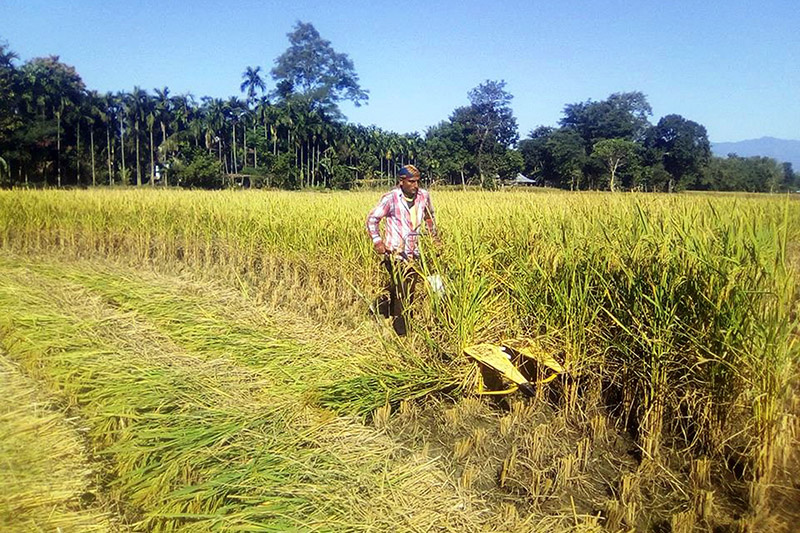Paddy production up ... and so is rice import
Kathmandu, November 22
At a time when the government has been rejoicing over the increasing production of paddy in recent years, surging production of the crop has not been able to bring down the import of rice accordingly.
The country’s recent macroeconomic report, unveiled by Nepal Rastra Bank (NRB), reveals that the import of rice has gone up by more than 40 per cent in the first trimester of fiscal year 2017-18.
As per the NRB report, Nepal imported rice worth Rs 5.37 billion in the first three months of this fiscal against Rs 3.8 billion worth of rice imported in the same period of fiscal 2016-17. The country had imported rice worth Rs 3.24 billion in the first trimester of 2015-16.
As the government plans to become self-sustained in rice in the near future with increased domestic production, the increasing import of rice has surely made a mockery of this plan of the government. With increased production figure of paddy in the last fiscal year, the Ministry of Agricultural Development (MoAD) has set record-high paddy production target of 5.4 million tonnes for the current fiscal.
Previously, paddy production had reached an all-time high of 5.23 million metric tonnes in 2016-17.
MoAD officials have cited the increasing rice import to surging consumption of the cereal crop in the country and consumers becoming more brand-conscious. “Rice consumption in the country is increasing every year while domestic production has not gone up accordingly,” said Yogendra Karki, spokesperson for MoAD.
Similarly, Karki also said that domestic consumers have started preferring branded foreign rice over local brands thereby increasing imports. “I believe a major portion of imported rice consists of branded rice.”
However, MoAD officials are optimistic that rice import will come down gradually in the future.
“Paddy productivity and its plantation area have been increasing in Nepal. This will certainly boost paddy production and bring down the import of rice,” opined Karki.
MoAD has estimated per hectare productivity of paddy in the country to increase to 3.5 tonnes in 2017-18 against 3.37 tonnes per hectare productivity recorded in the previous fiscal. However, paddy productivity in Nepal is comparatively low. While China has been producing almost eight metric tonnes of paddy per hectare, Thailand and India have paddy productivity of seven metric tonnes per hectare and four metric tonnes per hectare, respectively.
MoAD officials also said that domestic rice should be made more competitive in terms of price and packaging to bring down rice import.






